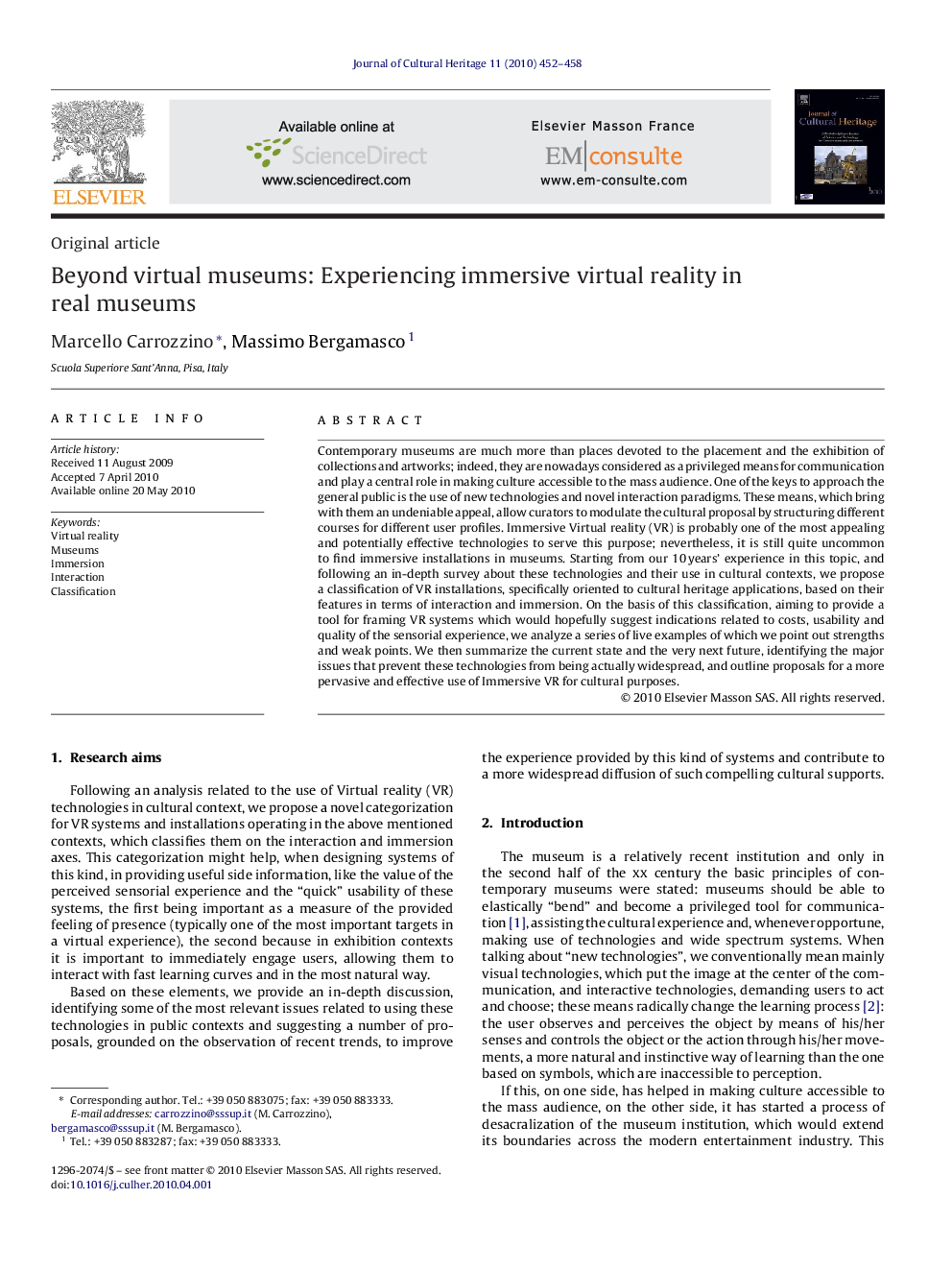| Article ID | Journal | Published Year | Pages | File Type |
|---|---|---|---|---|
| 1038565 | Journal of Cultural Heritage | 2010 | 7 Pages |
Contemporary museums are much more than places devoted to the placement and the exhibition of collections and artworks; indeed, they are nowadays considered as a privileged means for communication and play a central role in making culture accessible to the mass audience. One of the keys to approach the general public is the use of new technologies and novel interaction paradigms. These means, which bring with them an undeniable appeal, allow curators to modulate the cultural proposal by structuring different courses for different user profiles. Immersive Virtual reality (VR) is probably one of the most appealing and potentially effective technologies to serve this purpose; nevertheless, it is still quite uncommon to find immersive installations in museums. Starting from our 10 years’ experience in this topic, and following an in-depth survey about these technologies and their use in cultural contexts, we propose a classification of VR installations, specifically oriented to cultural heritage applications, based on their features in terms of interaction and immersion. On the basis of this classification, aiming to provide a tool for framing VR systems which would hopefully suggest indications related to costs, usability and quality of the sensorial experience, we analyze a series of live examples of which we point out strengths and weak points. We then summarize the current state and the very next future, identifying the major issues that prevent these technologies from being actually widespread, and outline proposals for a more pervasive and effective use of Immersive VR for cultural purposes.
